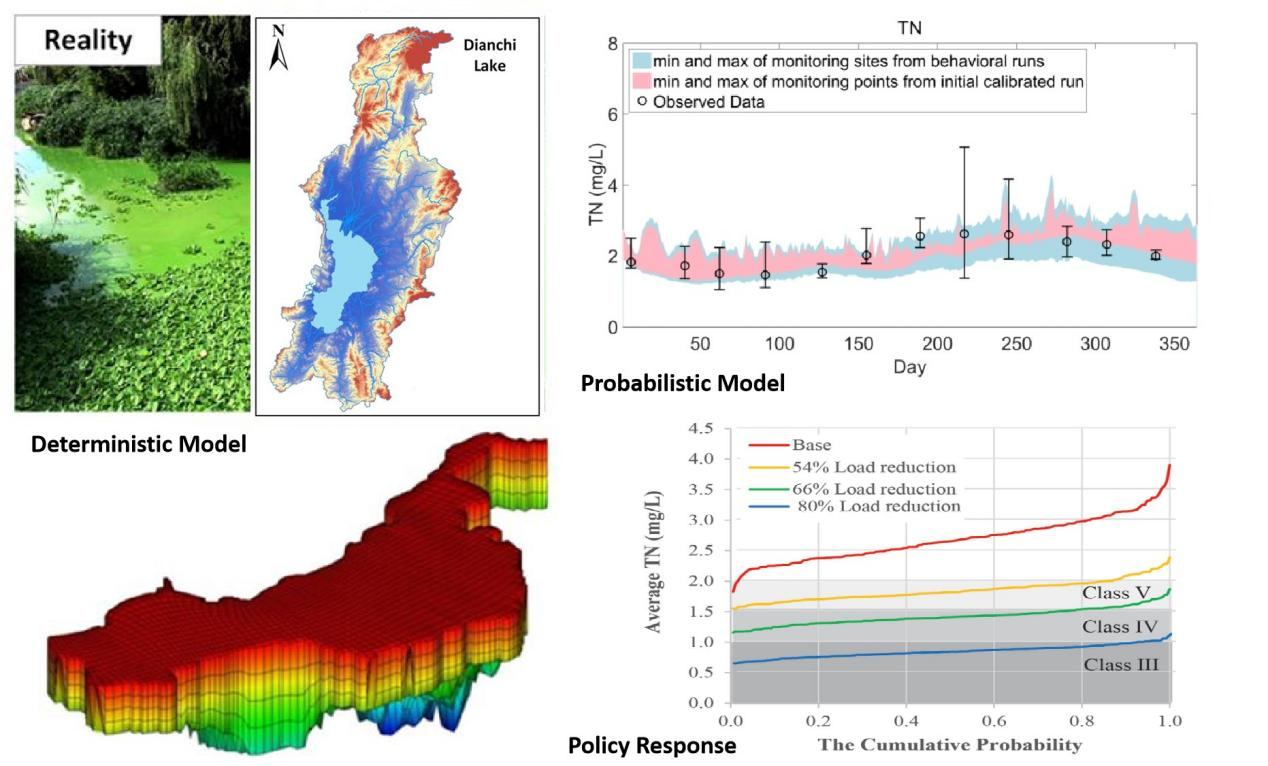近日,北京师范大学湾区国际商学院特聘副研究员廖夏伟博士以唯一通讯作者身份在环境管理领域1区TOP 期刊《Journal of Environmental Management》上发表了题为《Too ill to cure? – An uncertainty-based probabilistic model assessment on one of China’s most eutrophic lakes》的研究论文。该研究与中国南水北调集团、北京大学环境科学与工程学院、北京英特利为环境科技有限公司等单位的研究人员共同合作完成。《环境管理》期刊也是英国商学院协会(The Association of Business School, 简称ABS)所出版的高质量学术期刊指南ABS列表的三星期刊,2022年的影响因子为8.91。
河湖富营养化是一个全球性的挑战。国际社会在恢复富营养化水体上投入巨大,但成效不及预期,这也直接反映出污染治理和生态修复的困难和不确定性。滇池是我国第六大淡水湖泊,也是富营养化问题最严重的湖泊之一。“九五”以来,我国政府就将滇池列入“三河三湖”重点治理范围内。据了解,自20世纪80年代中期以来,已投资相关资金超过38亿美元。为掌握污染物负荷削减对湖泊富营养化的改善情况,本研究采用三维水动力水环境模型进行了模拟预测,考虑到较大水质建模中的参数不确定性,该研究将传统上使用的确定性水质模型扩展到一个基于不确定性的概率模型,以探索不同水平的污染物负荷减量对于滇池水质的影响。研究结果表明,鉴于滇池的污染历史悠久,污染状况严重,以2003年为基准年,污染负荷至少需要削减超过一半,才能使水质在未来保持现状水平。而至少需要减少百分之六十的污染负荷,才可能在现状上有所改善,而这种改善也会在大约十年后趋于稳定,这可以解释为什么我国用于滇池治理和保护的巨额投资却收效甚微的问题。若滇池水质能达到其水功能区的相关要求,污染物预计需要减少百分之八十以上。

滇池的现状、模型框架以及结果
论文摘要:Eutrophication is a global challenge, which is exemplified by the tremendous efforts but little results in restoring the sixth largest and also one of the most eutrophic freshwater lakes in China, Lake Dianchi. Considering large parametric uncertainties in water quality modeling, the traditionally used deterministic water quality model is expanded to a probabilistic model to explore the Lake Dianchi’s potential responses to different levels of pollutant load reductions. The results show that, given the long pollution history and severe pollution state in Lake Dianchi, a minimum pollution load reduction by half (base year 2003) is required to maintain the water quality state as it is now in 40 years. At least a 60% nutrient load reduction is required to generate any likelihood of water quality improvement, however, the system stabilizes quickly after about 10 years, which may explain why tremendous investments have generated little results. 80% of nutrient load reduction for 40 years has 95% probability of meeting the TN target but only a below 50% (45%) probability in meeting the TP target, and even less to meet water quality target for Chla. The feasibility of ever reaching the Chinese drinking water standards for total phosphorous and total nitrogen is questionable.
